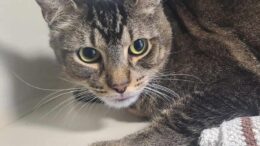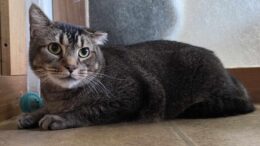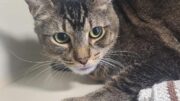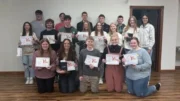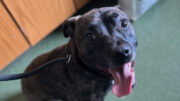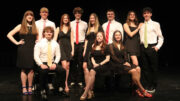Warming temps and sunshine brought some new arrivals to both flora and fauna. Spring birds are starting to filter in as more buds preview upcoming flowers.
Narcissus in this neck of the woods started to bloom and the apple trees have buds. The peach trees are out in full flower.
Violets have seemly just popped up in the yard and woodlands.
More buds and catkins are appearing on area trees … so if you’re sneezing, you know the reason.
As for our fine feathered friends, the robins appear to be settling in. The hermit thrushes and chipping sparrows have been back for a couple of weeks.
This collection of shots shows how the trail camera captures the exact moment when the geese were diving to feed … bottom’s up.
Fill your feeders
Meanwhile, a sound heard one morning prompted a search for the oriole feeder. Despite the feeling that it maybe way too early for the brightly colored visitors, a check of the internet finds that it just might not be.
Gary Edwards, a longtime member of the Seneca Rocks Audubon Society, has a list of expected arrival dates for returning migrants.
It is posted online at www.senecarocksaudubon.org under the link “Arrival Dates.”
Edwards has compiled a list of approximate early dates of arrival. The dates are based on his Venango County records.
His list shows the Baltimore orioles arriving around April 24, along with the rose-breasted grosbeaks.
Expected this week, would be the ruby-throated hummingbird. Edwards listed April 19 as the earliest arrival dates for these little beauties.
In fact, a quick look at the ruby-throated migration map at www.hummingbirds.net shows that hummers have been sighted in the state and a comparison with last year appears to show that they seem to be about a week earlier this year.
The regional migration forecast for April 14-21 for the upper Midwest and northeast at birdcast.info, expected favorable migration conditions.
Sunday’s rain was forecast to slow the birds movements a little, but the site said “a new set of favorable conditions arrives on Tuesday for continued flights of similar intensity and extents.”
Under the peaking arrivals for the week, birdcast listed the northern flicker, hermit thrush, tree swallow, eastern towhee and chipping sparrow, among others.
The top movers for last week, according to the site, included the purple finch and white-throated sparrow.
Some other more recognizable birds on Edwards’ list possibly showing up in the area in late April include the eastern wood-peewee, the scarlet tanager, the indigo bunting, the gray cat bird and many more.
Meanwhile, it might be time to clean the hummingbird and oriole feeders and do a little maintenance on the seed feeders.
Earlier this month, Tamarack Wildlife Rehabilitation and Education Center in Saegertown posted some tips on its Facebook page.
“This is a great time to disinfect your bird feeders and rake up spent shells underneath,” the center posted.
“As the weather warms, the bacteria causing conjunctivitis can spread around heavily used birds feeders,” it added.
People should clean feeders with a bleach solution – 9 parts water: 1 part bleach – allow to dry and refill.
They should also rake up spend shells and dispose of away from the feeder – they can be composted if desired, the center posted.
The website www.allaboutbirds.org has some tips for hummingbird feeders. People should use table sugar rather than honey to make hummingbird food. When honey is diluted with water, bacteria and fungus thrive in it, the site said. The mixture is ¼ cup of sugar per cup of water.
“During cold, rainy or foggy conditions when fresh water is plentiful but birds need more energy, it’s fine to make the mixture 1/3 cup of sugar per cup of water. Concentrations of sugars in natural nectars vary within about that range,” the site said.
The site noted that there’s no need to add red food color to sugar water, or to use red-colored commercial mixes.
“Nectar in flowers is clear, after all, and red food coloring may be harmful for hummingbirds,” it said.
It also said “hummingbird bottle feeders tend to leak in the sun, because air trapped in the top of the bottle expands as it warms and pushes the nectar out” and that folks should avoid locating their feeders in the direct sun.
Now that the feeders are clean and up, all that’s left to do is wait and hope that the bears don’t discover them.
Crazy Critters
A Walk in the Woods contains photos from newsroom staffer Anna Applegate’s daily jaunts around her neck of the woods. Tagging along on the treks are dogs, Buford, Sherman and Sadie, and goats, Kyle and Kennedy. Applegate manages the Good Times and can be emailed at bigdogs.thederrick@gmail.com.















